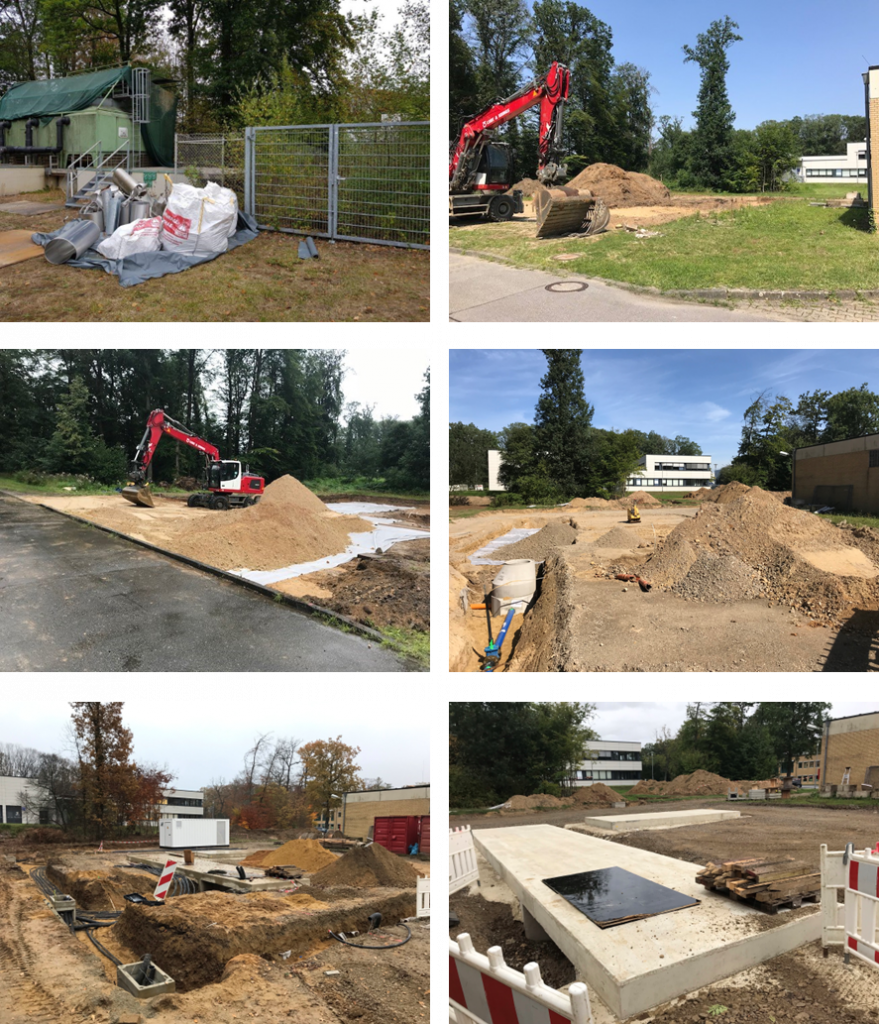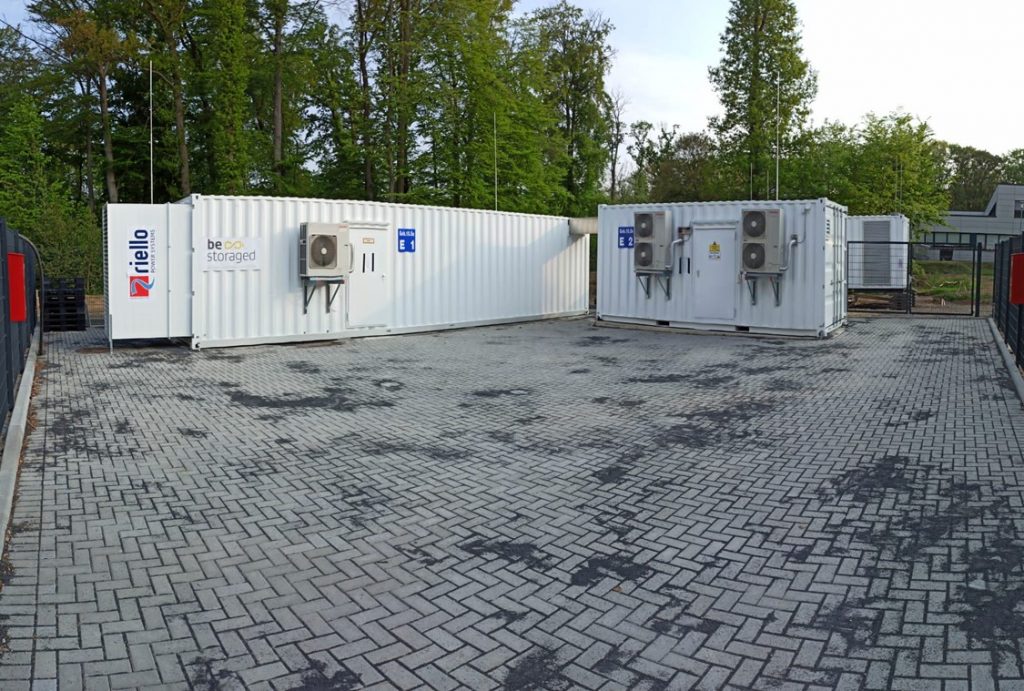In a previous blog in October 2020, I wrote about the installation of two battery energy storage systems as part of the LLEC energy demonstrators. After a long and difficult planning process, we can finally report that one of the two systems, the high-power system, has been successfully installed and commissioned in cooperation with our partners be.storaged GmbH and Riello Power Systems GmbH.
Preparation of the construction site
The preparation of the construction site was quite an effort. A cooling device from TEXTOR, a former fusion research facility, had to be disposed and, unfortunately, it was also necessary to remove some trees. Once this was done, ground work was planned. The area of the whole battery site was excavated and filled with special gravel (in the form of crushed stone) for preparing a proper and solid basis. Directly after preparing the basis, a drainage system was installed for drainage of rain and fire water. It should be noted that the drainage system has been designed in such a way, that the fire water can be collected and properly disposed. Also, the cables for connecting the battery to the power grid have been put in the ground at this stage. Finally, the concrete foundation plates, one for the power-electronics and the other one for the battery-container, were made. In figure 1 a ‘time-lapse’ of the site preparation is shown.

Installation of the high-power battery
Once the site was prepared and the foundation dried, the battery system itself could finally be delivered and put on its base. The two containers (20- and 40-foot) were delivered with two trucks, and a crane has lifted both containers onto their massive concrete foots. This went really fast, but felt like a huge step forward when that was done. However, still a large amount of work had to be performed, such as laying cables, connecting everything and the battery modules still had to be installed, because at that time the fire warning system was not connected and operable yet. After putting the containers in place, the pavement was laid and the whole area was fenced. A photo collection of the whole process is shown in figure 2 and 3.


Commissioning of the high-power battery
After most cabling was laid and connected, the battery system could be put into operation. In the meantime, the fire warning system and the fire extinguishing system were already commissioned and approved by TÜV. Moreover, TÜV also approved the system regarding handling with water-polluting substances (Li-ion batteries contain chemicals). During commissioning, we went through a pre-defined test program. Since the system has two functions, namely to perform peak-shaving and to serve as uninterruptable power supply (UPS), a lot of different functions had to be tested, such as: capacity checks, safety systems, measurement systems, communication, power feedback into the grid, battery charging under different loads, power output at the UPS side under different loads, and grid black out. When using maximum power, one can really feel the heat generated by the losses in the electric components. Therefore, this was also a good test to check the functionality of the cooling systems for both the inverters and batteries. At the same time of taking the system into operation, TÜV also checked the system on its electric components, such as the power distribution system and lightning protection.
Current status and planning
In the near future, the system can be controlled for charging and discharging via a virtual subnet of JuNet, the FZJ-campus network, such that remote control is possible and all signals of the LLEC demonstrators can be exchanged across the control platform. The fire warning system and fire extinguishing system are working independently of the communication for control such that the safety is maintained. Furthermore, we are setting up the remote controlling system. The remote controlling system enables the grid operator to ‘access’ the ‘active storage segment’ of the system remotely and will do this if we, for example, feedback power into the grid at an unappropriated time. It should be noted that we and also the grid operator, have no influence on the UPS-segment (the part reserved for UPS) of the system. When everything with the remote controlling system has been clarified, we can start using the system for our research, of which basically two types are planned: One for implementing the battery system as a whole into the LLEC smart energy system, which is taken care of by IEK-10. The other one is for battery system research, which is taken care of by IEK-9. In the latter, battery cell and inverter data, such as voltages, current, temperatures are measured during special tests which will be used to validate battery (system) models. In the case of the research of IEK-10, the battery will be controlled for (dis)charging with a certain power and with a certain time to make energy flows and usage in the smart LLEC grid as efficient as possible. In a following blog contribution, we will explain more about the scientific usage of both battery systems.
For the details of the system, you can visit the LLEC website: Batteriespeicher.
We thank the companies be.storaged GmbH and Riello Power Systems GmbH for their extensive efforts and bringing this project to a successful end. We also would like to acknowledge all FZJ colleagues for their kind and unbridled assistance in the course of the project. Thank you all!

No Comments
Be the first to start a conversation